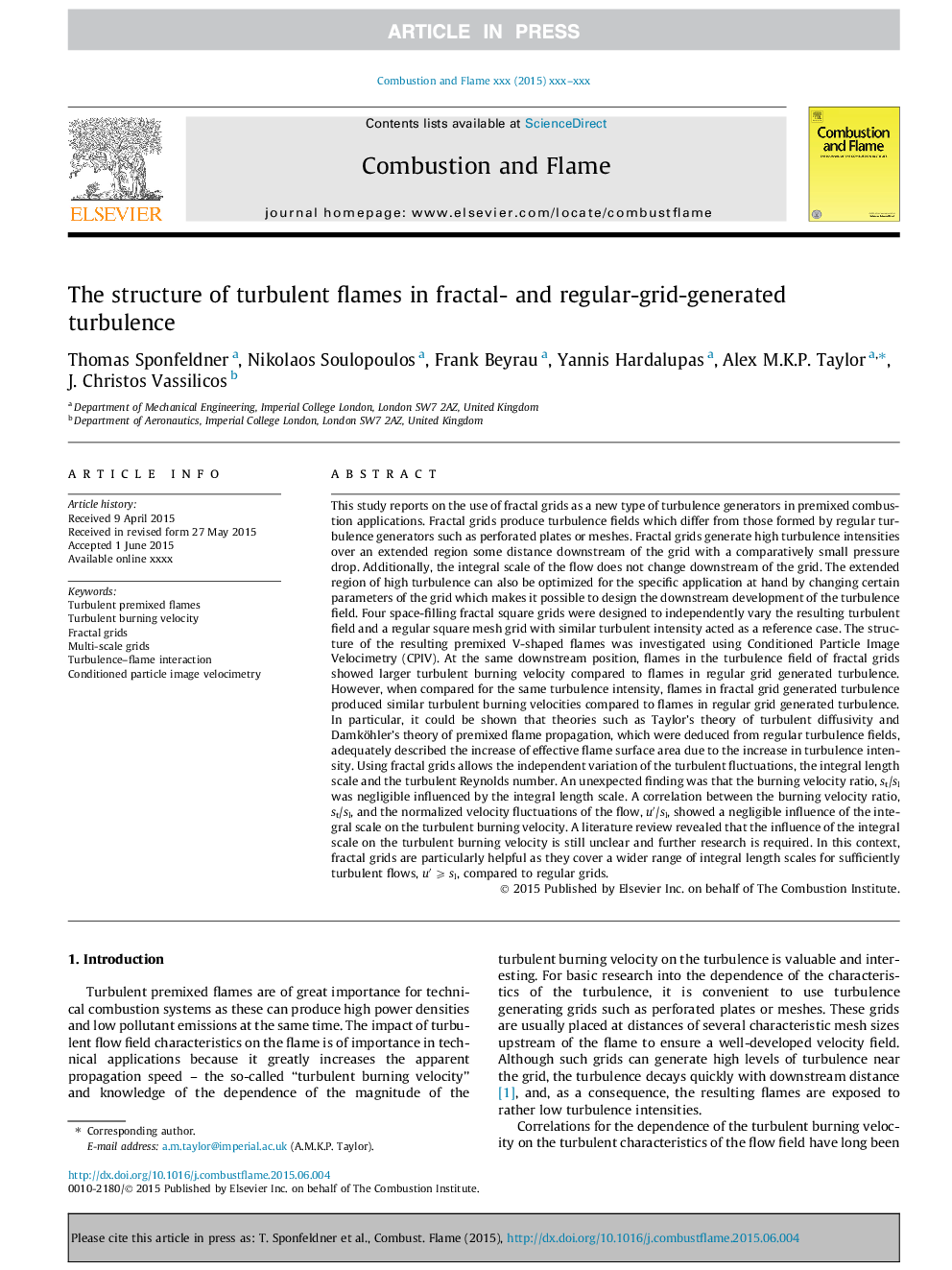| Article ID | Journal | Published Year | Pages | File Type |
|---|---|---|---|---|
| 10264628 | Combustion and Flame | 2015 | 15 Pages |
Abstract
This study reports on the use of fractal grids as a new type of turbulence generators in premixed combustion applications. Fractal grids produce turbulence fields which differ from those formed by regular turbulence generators such as perforated plates or meshes. Fractal grids generate high turbulence intensities over an extended region some distance downstream of the grid with a comparatively small pressure drop. Additionally, the integral scale of the flow does not change downstream of the grid. The extended region of high turbulence can also be optimized for the specific application at hand by changing certain parameters of the grid which makes it possible to design the downstream development of the turbulence field. Four space-filling fractal square grids were designed to independently vary the resulting turbulent field and a regular square mesh grid with similar turbulent intensity acted as a reference case. The structure of the resulting premixed V-shaped flames was investigated using Conditioned Particle Image Velocimetry (CPIV). At the same downstream position, flames in the turbulence field of fractal grids showed larger turbulent burning velocity compared to flames in regular grid generated turbulence. However, when compared for the same turbulence intensity, flames in fractal grid generated turbulence produced similar turbulent burning velocities compared to flames in regular grid generated turbulence. In particular, it could be shown that theories such as Taylor's theory of turbulent diffusivity and Damköhler's theory of premixed flame propagation, which were deduced from regular turbulence fields, adequately described the increase of effective flame surface area due to the increase in turbulence intensity. Using fractal grids allows the independent variation of the turbulent fluctuations, the integral length scale and the turbulent Reynolds number. An unexpected finding was that the burning velocity ratio, st/sl was negligible influenced by the integral length scale. A correlation between the burning velocity ratio, st/sl, and the normalized velocity fluctuations of the flow, uâ²/sl, showed a negligible influence of the integral scale on the turbulent burning velocity. A literature review revealed that the influence of the integral scale on the turbulent burning velocity is still unclear and further research is required. In this context, fractal grids are particularly helpful as they cover a wider range of integral length scales for sufficiently turbulent flows, uâ²Â ⩾ sl, compared to regular grids.
Related Topics
Physical Sciences and Engineering
Chemical Engineering
Chemical Engineering (General)
Authors
Thomas Sponfeldner, Nikolaos Soulopoulos, Frank Beyrau, Yannis Hardalupas, Alex M.K.P. Taylor, J. Christos Vassilicos,
